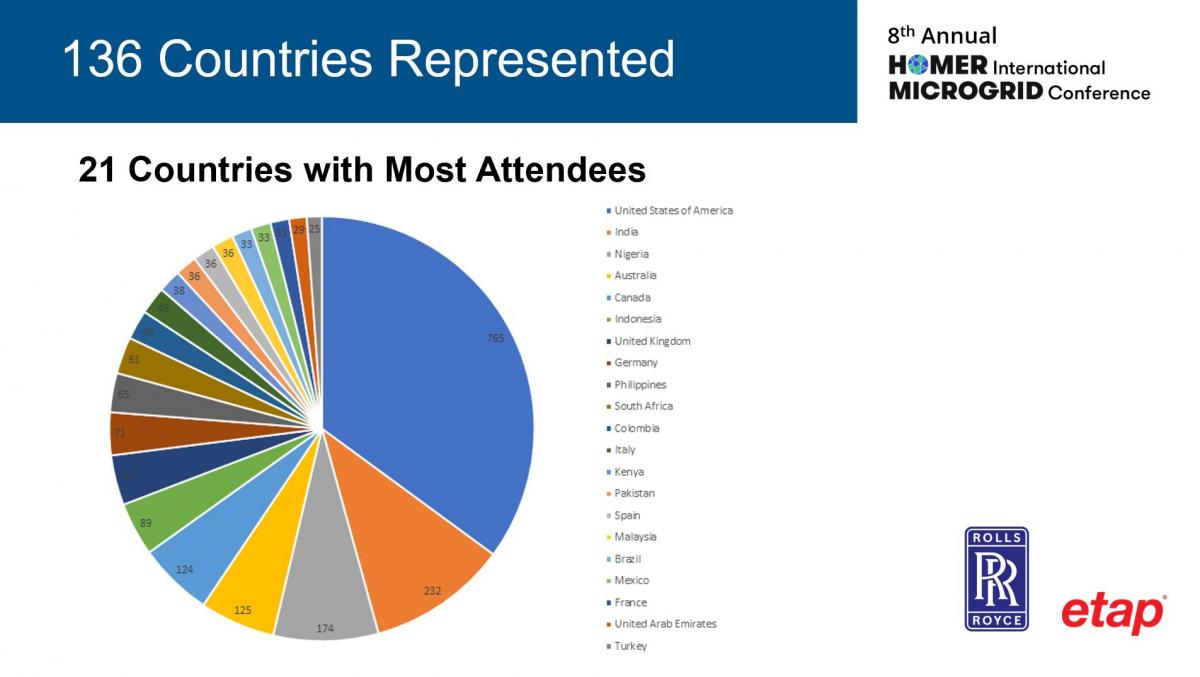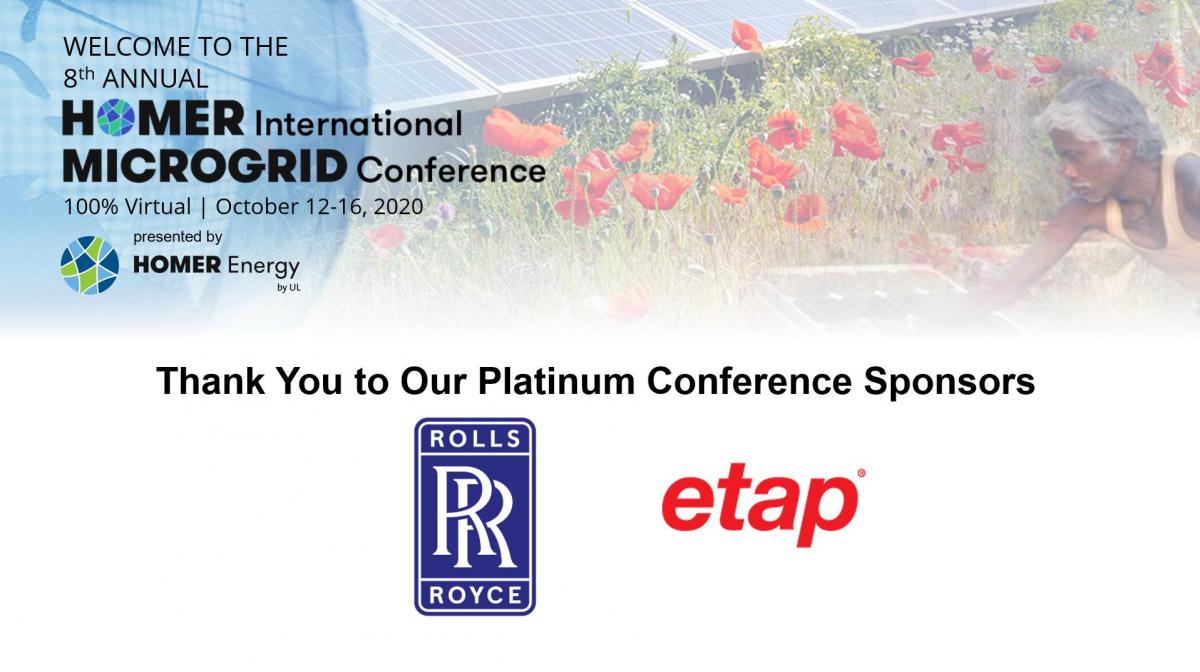One word—unprecedented—encapsulates the 8th Annual HOMER International Microgrid Conference. With record-breaking attendance, unmatched international representation, and an extraordinary selection of in-depth presentations, HIMC 2020 was an overwhelming success.
The event’s 100% virtual format allowed 3,200 energy professionals from 136 different countries to participate in dynamic panel discussions, experience virtual booth visits, and learn from presentations by the industry’s leading experts. Audience engagement was at an all-time high with attendees participating in polls related to microgrid industry market forecasts and drivers, and sharing experiences in the Q&A discussions that followed each conference session.
In his opening remarks, HOMER Energy by UL founder Dr. Peter Lilienthal provided a bird’s eye view of distributed energy’s path, outlining key lessons learned from early hybrid systems, as well as the way forward for the microgrid industry. He invited the audience to reflect on what actions are needed to accelerate change and stressed the importance of working toward and achieving the six D’s of the energy future: an energy landscape that is distributed, decentralized, diverse, digitized, decarbonized, and democratized.

Building upon this insightful foundation, this year’s HIMC 2020 presenters covered the globe with valuable, real-world examples of successful hybrid systems. Over the course of the week-long event, speakers shared insightful case studies from off-grid island communities in Australia and Indonesia, remote installations in the circumpolar Arctic, C&I projects with innovative business models, and hybrid systems in Somaliland providing energy access.
“Resiliency, resiliency, resiliency is the word on everyone’s lips today,” moderator Karl Rábago said during the regulatory panel discussion, articulating a sentiment that was echoed throughout the conference. The case for microgrids has never been so clear. We are now seeing the impacts of Climate Change on the grid. Coupled with the fragility of our aging infrastructure, natural disasters are leading to outages and intermittency. The increasing frequency and severity of weather-related events has created an overwhelming need for microgrids.
A common thread was the effect of the global pandemic on microgrid markets. Michael Brower, Vice President of Renewable Energy & Power Technologies at UL, offered a visionary perspective in his opening comments. “COVID-19 may slow the market for a while in some areas, but not for long,” he said, explaining that the pandemic will likely impact capacity additions and cause some project delays this year, but that momentum should resume in 2021. He predicted that COVID-19 and the economic downturn could in fact accelerate the shift to resilient, zero-carbon power with localized renewable generation considered an antidote to globalization and clean energy investments viewed as job creators.

So, what does the future hold for microgrids? Throughout the conference, many industry experts noted the industry’s extraordinary market growth in recent years, and offered an overwhelmingly positive outlook, estimating that the current $28.6 billion market will reach $47.4 billion by 2025. An HIMC attendee poll indicated that conference participants agreed with the perspective is realistic with 56% voting that the market forecasts are “about right.”
Peter Asmus, Microgrid Research Director at Guidehouse Insights, identified two important trends gaining traction—the energy-as-a-service business model and modular microgrids—and forecasted robust market growth through 2029. Other experts added that all signs indicate a positive industry trajectory. They noted factors including the recent shifts in regulatory policies to make microgrid and hybrid renewable systems easier to deploy as well as the sense of legitimacy added by the investments in microgrids by utilities.
In each conference session, it was apparent that along with advances in microgrid management tools, distributed energy resources, and energy storage products, an array of new system configurations and business models have emerged. These innovative solutions, coupled with supportive regulatory frameworks, are catalyzing the industry as microgrids lead the way to a clean and reliable power future. The revolution is now.
To view this and other recorded sessions from the 8th annual HOMER International Microgrid Conference, please visit the resources page at https://microgridconference.com/resources-access-request.
To learn more about microgrid trends and conference participants, please visit www.microgridconference.com.
